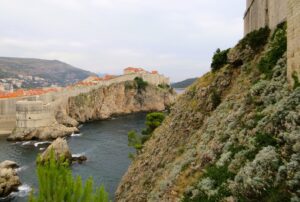
Drive along the beautiful Dalmatian coast, stopping along the way at spectacular seaside cities. Is it wrong that people probably know more about fictional Games of Thrones locations than actual historical sites within Croatia? Well, the majestic shoreline and craggy cliffs are perfect spots for building fairy tale castles – real or imagined.
Must Sees: Dubrovnik | Must Sees: Split | Must Sees: Plitvice Lakes | Food
MUST SEES: DUBROVNIK
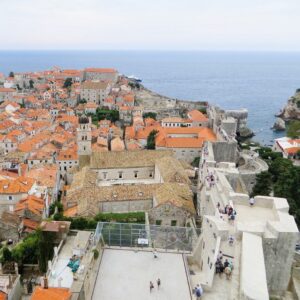
Dubrovnik
Dubrovnik is the Pearl of the Adriatic. High walls surround the perimeter of the medieval city. The charming city and beautiful red tile rooftops extend to the sea at the southern end of Croatia. Caught between Venice and Turkey, they were free to trade between east and west.
City Wall Walk
Climb a staircase to the top of the wall and walk along the ramparts of the Old Town. At some points, the narrow ledge has a sheer drop on the other side. Can you imagine the soldiers scurrying back and forth on the wall when the city was under a naval attack?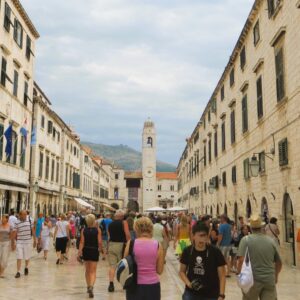
Placa
The Placa’s smooth, white, limestone walkway runs right through the heart of the Old Town. There are shops, restaurants, and churches all along the main promenade. Every so often, there is a narrow side alley with steps leading up a hill toward the walls.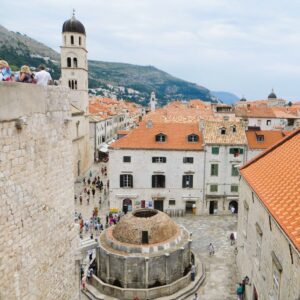
Large Onofrio Fountain
Next to the western gate, this fountain has supplied the city with fresh water from a spring 7.5 miles away. The 15 carved masks have drinking water flowing from their mouths.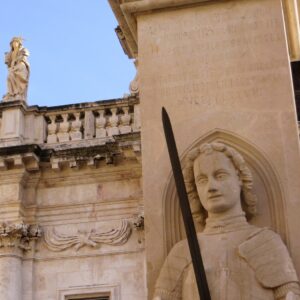
Orlando’s Column
Orlando was a legendary medieval knight who defended Dubrovnik against invaders. By this column in Luža Square, the town crier spilled the tea.
Fort Lovrijenac
Fort Lovrijenac is located to the west of Old Town, outside the city walls on a high cliff. This was the Game of Thrones film set for the Red Keep in King’s Landing, where the Iron Throne resided. Joffrey’s Purple Wedding was also in a park behind the fort.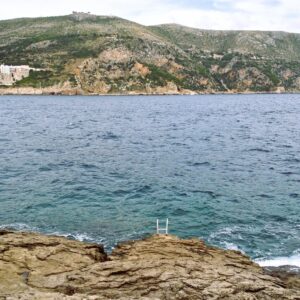
Lokrum
From the end of the pier of the old city, you can take a 10-minute water taxi to Lokrum Island. From Fort Royal, you can gaze into the sea as well as see the old city. At the end of the island, there’s a nude beach. Climb the ladder to swim in the choppy Adriatic.
MUST SEES: SPLIT

Diocletian’s Palace
Emperor Diocletian’s seaside retirement home is the best-preserved Roman palace. It’s a stunning mix of homes, shops, and restaurants. You squeeze through narrow alleys, walk under columns, and enter breezy courtyards. The Peristyle court is a focal point for music, singing, and dancing.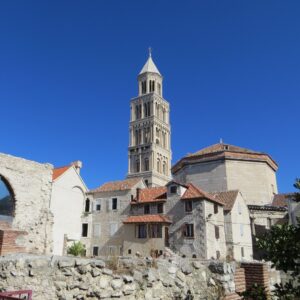
Bell Tower
The Belfry of St. Domnius was built in the 14th century. Climbing up the bell tower is a nerve-wracking experience because the iron staircase seems to be hanging by a thread. At the top, you are richly rewarded with panoramic views of Diocletian’s Palace and Split.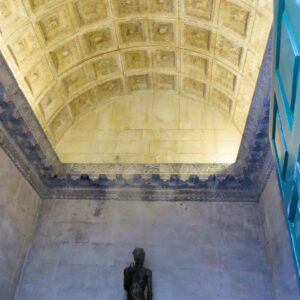
Temple of Jupiter
An Egyptian, black, granite sphinx guards the entrance to the temple. The solid walls support a barrel-vaulted ceiling. A decorative frieze wraps around three of the walls. A small statue of St. John the Baptist stands at the back wall.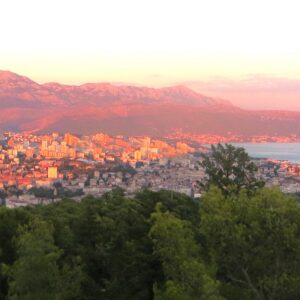
Marjan
Marjan Hill is covered in a dense pine forest. Trek to the top of the hill by walking up the steepest road leading out of Split. A long staircase leads to a viewing platform. Wait for the sun to set and watch the flicking red and purple hues dance on the rooftops of Split.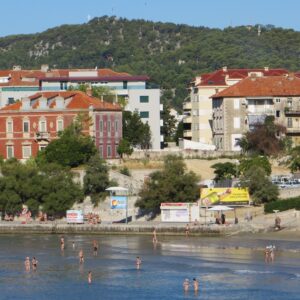
Bačvice Beach
The locals enjoy standing in the shallow sea. In the afternoon, beachgoers play a game called picigin where they try to keep the ball from touching the water.
MUST SEES: PLITVICE LAKES
Croatia’s natural splendors go beyond its dazzling coastline. Plitvice Lakes National Park is a UNESCO World Heritage Site with gemstone lakes of unmatched color and clarity. Plitvice Lakes contains 16 terraced lakes between Mala Kapela Mountain and Pljesevica Mountain, as well as impressive waterfalls and caves. From the confluence of the Black River and the White River, the Korana River feeds the Plitvice Lakes. The lake system is divided into 12 upper and 4 lower lakes.

Gornja Jezera (Upper Lakes)
The Upper Lakes region contains many little and shallow cascading lakes. The rocks in the Upper Lakes are mainly dolomite, a type of sedimentary rock composed of calcium magnesium carbonate. The most beautiful waterfalls are Veliki prstavac and Mali prstavac.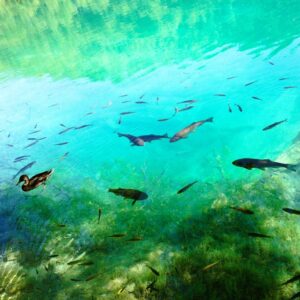
Donja Jezera (Lower Lakes)
The Lower Lakes were revealed after the collapse of the subterranean chambers that the water had been flowing through. Along the way is Supljara Cave, which requires a climb all the way to the top of the slope. The water is crystal clear and teeming with fish.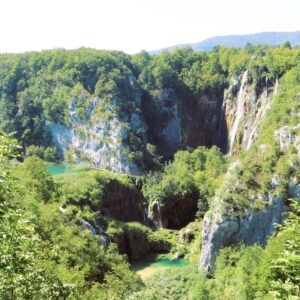
Veliki Slap
The “Great Waterfall” is a magnificent 255-foot waterfall with multiple cascades streaming from the top. Climb a really steep path across from the falls to gain a better view.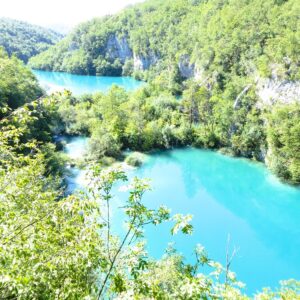
Sastavci
The Sastavci (Novokovica Brod, Kaluderovac, Gavanovac, and Milanovac) are the crown jewels of the park. They are stunning lakes of such deep, rich blue-green and turquoise color. Climb around the gorge and cross the boardwalk between the lakes to get better perspectives of the magnificent scenery.
FOOD
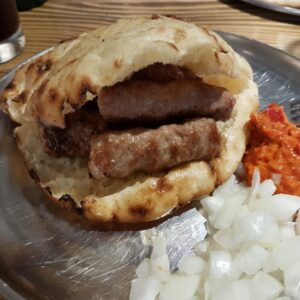
Ćevapi
Ćevapi are short little sausages of minced beed and lamb and spices. You order them in portions of three and eat them with ajvar pepper sauce and chopped raw onion. Grab the ćevapi with the crispy lepinje flatbread.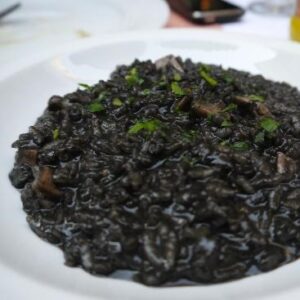
Black Risotto
Cuttlefish ink gives black risotto its distinctive color. The simple combination of rice, onions, and broth with cuttlefish and olive oil creates a complex, silky, and creamy dish. This is a popular dish at seaside konobas (taverns).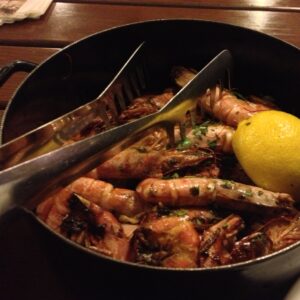
Grilled Shrimp
Enjoy a large pan of grilled shrimp and bread. The shrimp is cooked in olive oil, garlic, lemon juice, and herbs.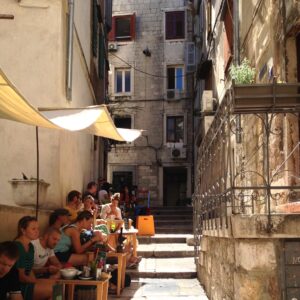
Figa
In Split, visit Figa in Diocletian’s Palace. They have arranged tables for al fresco dining along a narrow staircase in front. At this epic dining location, they have a menu of rotating dishes, such as monkfish with almonds, olives, and polenta.
Rožata
Rožata is a smooth and creamy custard pudding made with rose liqueur.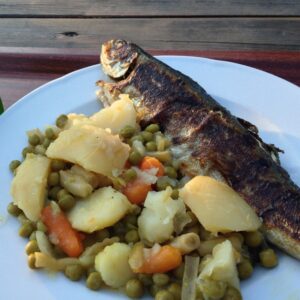
Grilled Trout
The lakes and rivers near Plitvice Lakes offer fresh and flavorful trout. Local chefs grill the trout in olive oil and salt and serve it with potatoes and peas. The simple preparation allows the flavors of the trout to shine through.Regions
Africa | Antarctica | Asia | Australia | Europe | Middle East | North America | South America